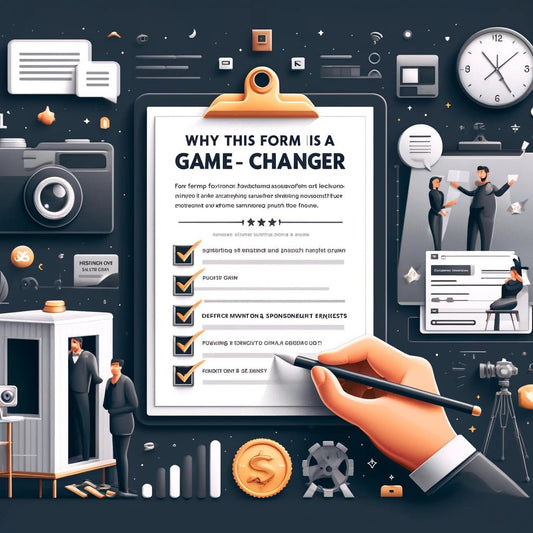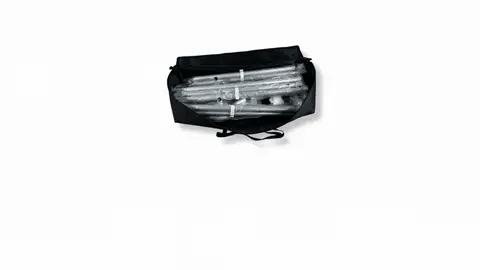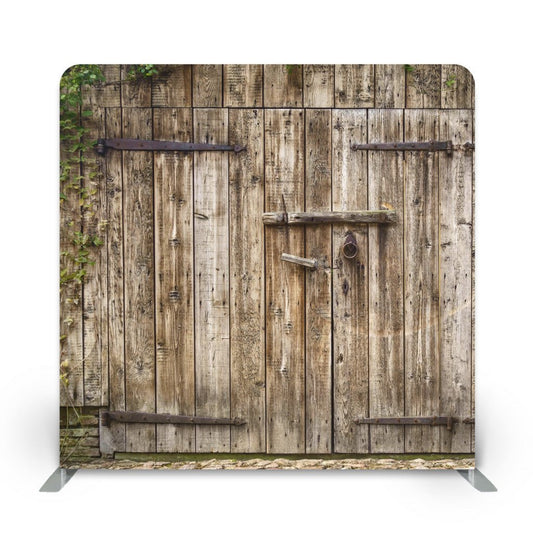
The Power of Corporate Event Branding: Enhancing Your Business Image
Share
.jpg)
Corporate event branding plays a crucial role in creating a unique and impactful experience for attendees while promoting a business or organization. By incorporating branding elements into every aspect of the event, from design to messaging, companies can establish a strong brand identity, create memorable experiences, and increase brand awareness. Planning a successful corporate event branding involves defining branding goals, understanding the target audience, choosing a theme and design elements, incorporating branding elements in every aspect, creating engaging experiences, and utilizing social media and online presence.
Key elements of corporate event branding include a well-designed logo and visual identity, consistent typography and color palette, branded signage and displays, branded collateral and merchandise, and maintaining a consistent messaging and tone. To measure the success of corporate event branding, companies can collect attendee feedback and conduct surveys, track social media engagement and reach, assess lead generation and sales impact, and perform post-event analysis to evaluate the return on investment (ROI).
By implementing effective corporate event branding strategies, businesses can not only enhance their brand visibility and recognition but also create an immersive and memorable experience that resonates with attendees long after the event concludes.
What is Corporate Event Branding?
Corporate event branding is the process of creating a unique identity and image for a corporate event. It involves utilizing various branding elements such as logos, color schemes, taglines, and visual designs to establish a consistent and cohesive brand experience. The goal of corporate event branding is to differentiate the event from others, create a memorable experience for attendees, and reinforce the event's key messages and objectives. By employing effective branding strategies, organizers can enhance the event's visibility, generate a positive reputation, and attract target audiences. Successful corporate event branding ensures that the event is recognized and remembered long after it has ended.
Why is Corporate Event Branding Important?
Discover the power of corporate event branding and why it holds immense significance. From building brand identity to creating unforgettable experiences and increasing brand awareness, each sub-section of this article sheds light on a different aspect of this essential practice. Unveiling the secrets behind successful corporate events, we delve into how branding plays a pivotal role in crafting a lasting impression and amplifying your brand's reach. Harness the potential of event branding and revolutionize your corporate gatherings.Building Brand Identity
Building brand identity is an essential aspect when it comes to corporate event branding. By seamlessly integrating consistent visual elements, messaging, and experiences, companies can successfully establish a unique and easily recognizable brand identity. This not only helps in achieving brand recognition but also enables them to gain the trust of their audience and stand out from their competitors. Crucial components for building a strong brand identity encompass an exclusive logo and visual identity, the use of consistent typography and color palette, incorporating branded signage and displays, as well as utilizing branded collateral and merchandise. By consistently showcasing these elements throughout the event, companies can reinforce their brand identity and leave a lasting impression on attendees.
Creating a Memorable Experience
In order to establish a strong brand presence and make a lasting impression on attendees, it is essential to create a memorable experience at corporate events. Consider the following strategies:
- Interactive activities: Incorporate elements that encourage engagement and interaction, such as photo booths, virtual reality experiences, or live entertainment. This will captivate attendees and make the event more enjoyable.
- Unique venues: Select a venue that aligns with your brand values and provides a distinctive atmosphere. This will enhance the overall experience and contribute to the event's uniqueness.
- Personalization: Tailor the event to cater to individual preferences by offering customized experiences. This could include personalized welcome gifts or customizable food and beverage options, allowing attendees to feel special and appreciated.
- Sensory stimulation: Engage all senses by incorporating visual displays, captivating audio, enticing scents, and interactive tactile elements throughout the event. This will create a multi-dimensional experience and leave a lasting impression on attendees.
- Storytelling: Develop a narrative that resonates with attendees, evoking emotions and creating a connection to your brand. A compelling story that is woven throughout the event will leave a lasting impression and reinforce your brand identity.
By implementing these strategies, you can ensure that your corporate event branding creates a memorable experience for all attendees.
Increasing Brand Awareness
Increasing brand awareness is a crucial aspect of corporate event branding. It allows companies to promote their brand to a wider audience and make a lasting impression. To effectively enhance brand awareness during corporate events, consider the following strategies:
- Branded signage and displays: Use eye-catching signage and displays that prominently feature your brand logo and messaging.
- Social media integration: Encourage attendees to share their experiences on social media using event-specific hashtags and interactive social media walls.
- Partnerships and sponsorships: Collaborate with influencers, industry partners, and sponsors to expand your reach and tap into their existing audiences.
- Unique experiences: Create memorable and shareable experiences that align with your brand values and generate buzz among attendees.
- Promotional merchandise: Distribute branded merchandise like t-shirts, tote bags, or pens to increase brand visibility during and after the event.
By implementing these strategies, you can maximize the impact of your corporate event branding and effectively increase brand awareness.
How to Plan a Successful Corporate Event Branding?
Planning a successful corporate event branding is no easy task. It requires careful consideration and strategic thinking to make a lasting impact on your audience. In this section, we will explore key steps to ensure your event stands out. From defining your branding goals to incorporating branding elements in every aspect, each sub-section will provide valuable insights for a memorable and immersive corporate event. Buckle up, because we're about to dive into the world of event branding like never before!Define Your Branding Goals
When planning a successful corporate event branding, it is essential to define your branding goals. This will serve as a guiding principle throughout the planning process and help you create a cohesive and impactful brand experience. To define your branding goals, follow these steps:
- Identify your target audience and gain an understanding of their needs and preferences.
- Determine the message you wish to convey and the emotions you aim to evoke.
- Establish specific, measurable, achievable, relevant, and time-bound (SMART) goals for your event branding.
- Consider how your event branding aligns with your overall brand identity and values.
- Take into account the desired outcomes of your event branding, such as increased brand awareness or strengthened brand loyalty.
By following these steps, you can clearly define your branding goals and ensure that your corporate event branding strategy is both strategic and effective. Remember to continuously evaluate and adapt your goals as necessary to maximize the impact of your event branding.
Understand Your Target Audience
Understanding your target audience is crucial for successful corporate event branding. By understanding your target audience, you can tailor your event to their preferences and interests, ensuring a memorable and engaging experience. Conduct market research and gather data to gain insights into the demographics, psychographics, and behavior patterns of your target audience. Use this information to create personalized messaging, design elements, and activities that resonate with and appeal to your target audience. By doing so, you will be able to establish a strong connection with your attendees, build brand loyalty, and successfully achieve your event objectives. Remember that understanding your target audience is the key to delivering an impactful and relevant event. Pro-tip: Utilize surveys and feedback forms during and after the event to gather valuable insights and continuously improve your future events.
Choose a Theme and Design Elements
Choosing a theme and design elements is a crucial step in corporate event branding. It sets the tone, creates a cohesive experience, and enhances brand visibility. Here are some considerations:
- Align with brand identity: Select a theme that reflects your brand's values, personality, and industry.
- Visual elements: Incorporate branded colors, fonts, and imagery that resonate with your target audience.
- Interactive experiences: Integrate interactive elements like photo booths, digital displays, or branded games to engage attendees.
- Consistency: Ensure consistency in design across all event materials, including invitations, signage, and digital assets.
True story: A tech company hosted a futuristic-themed event, incorporating holographic displays, interactive VR experiences, and LED lighting in line with their innovative brand. Attendees were captivated and left with a lasting impression of the company's cutting-edge products.
Incorporate Branding Elements in Every Aspect
Incorporating branding elements in every aspect of a corporate event is crucial for creating a cohesive and impactful experience for attendees. Here are some ways to achieve this:
- Design: Ensure that all visual elements, including signage, displays, and promotional materials, reflect the brand's visual identity, such as logo, typography, and color palette.
- Messaging: Consistency in messaging and tone across all event communication, from invitations to speeches, helps reinforce the brand's values and personality.
- Experiences: Create interactive and engaging experiences that align with the brand's image and offer opportunities for attendees to connect with and remember the brand.
- Staff: Train event staff to embody the brand's values and provide a consistent brand experience to attendees.
- Technology: Utilize technology platforms, such as event apps or social media integrations, to further incorporate branding elements and engage attendees.
Pro tip: Make sure to evaluate the success of branding efforts by collecting attendee feedback and analyzing metrics such as social media engagement and lead generation. This will help refine future event branding strategies and maximize ROI.
Create Engaging and Interactive Experiences
Creating engaging and interactive experiences is crucial for successful corporate event branding. Here are some ways to achieve this:
Utilize Social Media and Online Presence
To effectively make use of social media and online presence for corporate event branding, it is important to consider the following strategies:
- Create a social media plan: Develop a comprehensive plan for utilizing various social media channels like Facebook, Twitter, LinkedIn, and Instagram to promote the event.
- Engage with followers: Regularly interact with followers by responding to their comments, messages, and mentions, and encourage them to share their experiences and promote the event themselves.
- Utilize event hashtags: Create a unique hashtag for the event and motivate attendees to use it in their posts to increase visibility and foster a sense of community.
- Share engaging content: Post compelling content related to the event, such as sneak peeks, behind-the-scenes footage, speaker interviews, and interactive polls or contests.
- Utilize influencer marketing: Collaborate with industry influencers or relevant individuals who have a large online following to promote the event and reach a wider audience.
- Leverage event website and landing pages: Optimize event websites and landing pages for search engines and incorporate social sharing buttons to encourage attendees to promote the event on their own social media platforms.
- Track analytics: Use social media analytics tools to monitor engagement, reach, and audience sentiment, enabling continuous improvement of social media strategies for future events.
What Are the Key Elements of Corporate Event Branding?
Discover the secrets to successful corporate event branding. Uncover the key elements that can take your event to the next level. From the iconic logo and striking visual identity to captivating typography and color palette, we'll show you how to build a memorable brand experience. Get ready to make a lasting impression with branded signage, displays, collateral, and merchandise. And don't forget the power of consistent messaging and tone throughout your event. Let's dive in and unlock the potential of corporate event branding.Logo and Visual Identity
When it comes to corporate event branding, having a strong logo and visual identity is crucial. Your logo represents your company and serves as a recognizable symbol for attendees. Along with the logo, the visual identity includes elements like colors, fonts, and graphics that create a cohesive and memorable brand image. Here are some key factors to consider when designing your logo and visual identity:
- Create a simple, unique, and versatile logo and visual identity that reflects your brand's values and resonates with your target audience.
- Color Palette: Choose colors that align with your brand's personality and evoke the desired emotions. Consistency in color usage helps in brand recognition.
- Typography: Select fonts that are readable and match your brand's tone. Use different font styles to create hierarchy and visual interest in your designs.
- Graphics and Imagery: Incorporate relevant graphics, images, or illustrations that support your brand message and enhance visual appeal.
To ensure successful logo and visual identity implementation, consider working with professional designers and obtaining feedback from stakeholders. Regularly evaluate and evolve your brand's visual elements to stay current and continuously reinforce your corporate event branding efforts.
Typography and Color Palette
Choosing the right typography and color palette is crucial in corporate event branding as it helps create a cohesive and visually appealing experience. The typography should align with your brand's personality and convey professionalism. Use fonts that are easy to read and appropriate for the event's theme. Similarly, the color palette should match your brand's colors and evoke the desired emotions. Utilize a combination of complementary colors that align with the event's purpose and create visual harmony. Consistency in typography and color throughout all event materials helps reinforce brand recognition and create a memorable experience.
| Typography | Color Palette |
|---|---|
| Choose fonts that reflect your brand's personality | Utilize colors that match your brand's identity |
| Use legible fonts that are easy to read | Select a combination of complementary colors |
| Align typography with the event's theme | Evoke desired emotions through colors |
| Ensure consistency in font styles and sizes | Reinforce brand recognition through color consistency |
Branded Signage and Displays
Branded Signage and Displays
Branded signage and displays play a pivotal role in corporate event branding by enhancing brand visibility and creating a cohesive visual identity. It is essential to consider several key aspects when incorporating branded signage and displays at corporate events:
- Consistency: It is crucial to ensure that all signage and displays consistently reflect the logo, typography, and color palette of the brand.
- Visibility: Strategically place signage and displays in high-traffic areas to maximize brand exposure and reach.
- Message Delivery: Utilize signage and displays to effectively convey key brand messages, event information, and important announcements.
- Creativity: Incorporate unique design elements and creative ideas that align with the brand's identity and event theme.
- Interactive Experiences: Engage attendees and leave a lasting impression by integrating interactive elements into displays.
- Quality: Represent the brand professionally by investing in high-quality materials and printing techniques for signage and displays.
Branded Collateral and Merchandise
Branded collateral and merchandise are essential for promoting a corporate event. They hold great significance as they serve as tangible mementos of the event and contribute to reinforcing the brand's identity. When incorporating branded collateral and merchandise, there are several key aspects to consider:
- Customized apparel: Staff members can wear T-shirts, hats, or jackets featuring the event logo and branding, or these items can be given away as promotional gifts.
- Branded stationery: Notebooks, pens, or notepads with the event logo are not only practical but also serve as effective promotional items.
- Promotional items: Tote bags, water bottles, or USB drives adorned with the event branding can be distributed among attendees as souvenirs.
- Event signage: Banners, signs, or backdrops displaying the event logo and messaging contribute to creating a unified brand experience.
- Customized gifts: Personalized gifts featuring the event branding can be presented to VIP guests or clients as a gesture of appreciation.
It is crucial to ensure that the branded collateral and merchandise align with the overall event theme and adhere to the branding guidelines. These items should be of superior quality and accurately reflect the brand image in order to make a lasting impression on attendees.
Consistent Messaging and Tone
Consistent messaging and tone are key elements of corporate event branding that help establish a strong and cohesive brand identity.
- Consistent Messaging: Ensure that all communication materials, including invitations, emails, and event signage, convey a consistent message that aligns with your brand's values and objectives.
- Consistent Tone: Decide on a tone of voice that reflects your brand's personality and resonates with your target audience. Whether it's formal, casual, or playful, maintain a consistent tone throughout all event interactions.
- Language: Use consistent language and terminology to reinforce your brand's message and avoid any confusion or inconsistencies.
Historical Example: During the Industrial Revolution, the consistent messaging and tone of the suffragette movement played a crucial role in advocating for women's rights and gaining societal recognition. By uniting their message and tonal approach, suffragettes were able to create a powerful and impactful brand that led to significant social change.
How to Measure the Success of Corporate Event Branding?
Curious to know how your corporate event branding measures up? Well, buckle up as we delve into the world of measuring success in corporate event branding. From gathering attendee feedback and analyzing surveys to tracking social media engagement and lead generation, we'll explore the key metrics for evaluating your event's impact. And that's not all! We'll wrap it up by examining the post-event analysis and calculating the return on investment. Get ready to discover the true effectiveness of your corporate event branding efforts!Attendee Feedback and Surveys
Gathering attendee feedback and conducting surveys is crucial for measuring the success of corporate event branding. This information provides valuable insights into the attendees' experience and satisfaction levels. Here are some key reasons why attendee feedback and surveys are important:
- Understanding attendee satisfaction: Attendee Feedback and Surveys help determine if the event met attendees' expectations and if they found value in the branding efforts.
- Identifying areas for improvement: Surveys allow organizers to identify any shortcomings or areas that can be enhanced in future events.
- Determining brand perception: Attendee Feedback and Surveys help gauge how attendees perceive and connect with the event's branding elements.
- Refining future branding strategies: Insights gained from Attendee Feedback and Surveys can be used to refine and improve future branding efforts for better engagement and impact.
The tradition of gathering feedback and conducting surveys has been used for centuries as a means of understanding people's opinions and experiences. From ancient civilizations who sought public opinions on governance to modern-day organizations collecting customer feedback, the practice continues to play a vital role in decision-making and improvement processes.
Social Media Engagement and Reach
Social media engagement and reach are crucial for the success of corporate event branding. Here are some essential factors to consider:
- Create a social media strategy: Develop a plan on how to effectively utilize various platforms to engage with your target audience and promote your event.
- Utilize engaging content: Share visually captivating graphics, videos, and exclusive behind-the-scenes moments to captivate your audience's attention.
- Encourage audience participation: Organize contests, polls, and interactive activities to motivate attendees to actively engage with your brand on social media.
- Make use of event hashtags: Incorporate a unique and catchy hashtag to promote your event and encourage attendees to share their experiences.
- Engage with your audience: Promptly respond to comments, messages, and mentions to foster two-way communication and establish a strong online presence.
By implementing these strategies, you can significantly enhance your social media engagement and reach, thereby amplifying the impact of your corporate event branding.
Lead Generation and Sales Impact
Lead generation and sales impact are crucial aspects of corporate event branding. They play a vital role in driving new leads and boosting sales for a company. To ensure maximum lead generation and sales impact, here are some effective strategies:
- Create interactive experiences centered around your brand to attract potential customers and encourage their engagement.
- Offer incentives or exclusive discounts during the event to entice attendees to make immediate purchases.
- Collect attendee data using lead generation forms or surveys, enabling you to follow up with targeted marketing campaigns later.
- Utilize various social media platforms to promote your event, engage with attendees, and broaden your audience reach.
- Evaluate the success of your event by tracking lead conversions, sales revenue, and return on investment (ROI).
According to a recent survey, a remarkable 72% of companies believe that events have a positive impact on their sales and lead generation efforts.
Post-event Analysis and ROI Assessment
Post-event Analysis and ROI Assessment are crucial steps in evaluating the success and effectiveness of corporate event branding. Here are some key aspects to consider during this process:
Collect data: Gather feedback from attendees through surveys or interviews to understand their experience and perception of the event.
Social media analysis: Measure the reach and engagement of event-related posts to gauge the impact on brand awareness and audience interaction.
Lead generation and sales impact: Assess the number of leads generated during the event and track any subsequent increase in sales to determine the event's ROI.
Post-event analysis: Analyze the event's overall performance, including attendance rate, sessions attended, and any technical or logistical issues that may have arisen.
ROI assessment: Calculate the return on investment by comparing the event's costs and the value it generated in terms of brand exposure, lead generation, and potential sales.
By conducting a thorough Post-event Analysis and ROI Assessment, companies can gain valuable insights for future improvements and ensure that their corporate event branding strategies deliver tangible results.
The Post-event Analysis and ROI Assessment helped a company identify areas of improvement for its annual conference. By gathering feedback, they learned that attendees preferred more interactive sessions and networking opportunities. Analyzing social media engagement revealed that the event generated a significant buzz and expanded their online reach. With increased lead generation and sales impact, the ROI Assessment showed that the event was a success, prompting the company to invest in similar events in the future.
Frequently Asked Questions
What is corporate event branding?
Corporate event branding involves creating a unique identity for the event, including the event name, logo, colors, and graphics, that reflects both the company's brand and the unique properties of the event. It is essential for creating a profitable corporate event and strengthening connections with the target audience.
Why is strong event branding important for corporate events?
Strong event branding is important for corporate events because it helps create a memorable and enjoyable experience for guests, reinforces the company's brand, and positions it as a leader in the industry. It also helps build product and brand awareness, support employee engagement, improve company culture, and find new customers.
What are some event branding ideas for corporate events?
Some event branding ideas for corporate events include having a branded red carpet backdrop as guests enter the party, using unique catering and wow-worthy décor, expanding reach for brand marketing, and turning a logo into an experience. There are 27 event branding ideas provided in the reference data for inspiration.
What types of corporate events require different branding and design elements?
Different types of corporate events, such as appreciation events, seminars/conferences/workshops, trade shows, product launches, and charity events, require different branding and design elements. Each event serves a specific purpose and requires careful consideration of the event's theme, decorations, food and drink, and printed materials to align with the event's branding.
How can corporate event design be incorporated into the event?
Corporate event design involves incorporating the corporate event brand into the décor of the event. This includes selecting decorations, choosing a theme, organizing catering, printing flyers, and creating a cohesive visual identity. The goal is to create a visually appealing and immersive experience that aligns with the event's branding and promotes the company's brand.
What is the purpose of planning a corporate event?
Planning a corporate event serves several purposes, including building product awareness, supporting employee engagement, improving company culture, finding new customers, and speaking directly to the target audience. It is an important opportunity for companies to showcase their brand, strengthen connections, and create an enjoyable experience for attendees.






